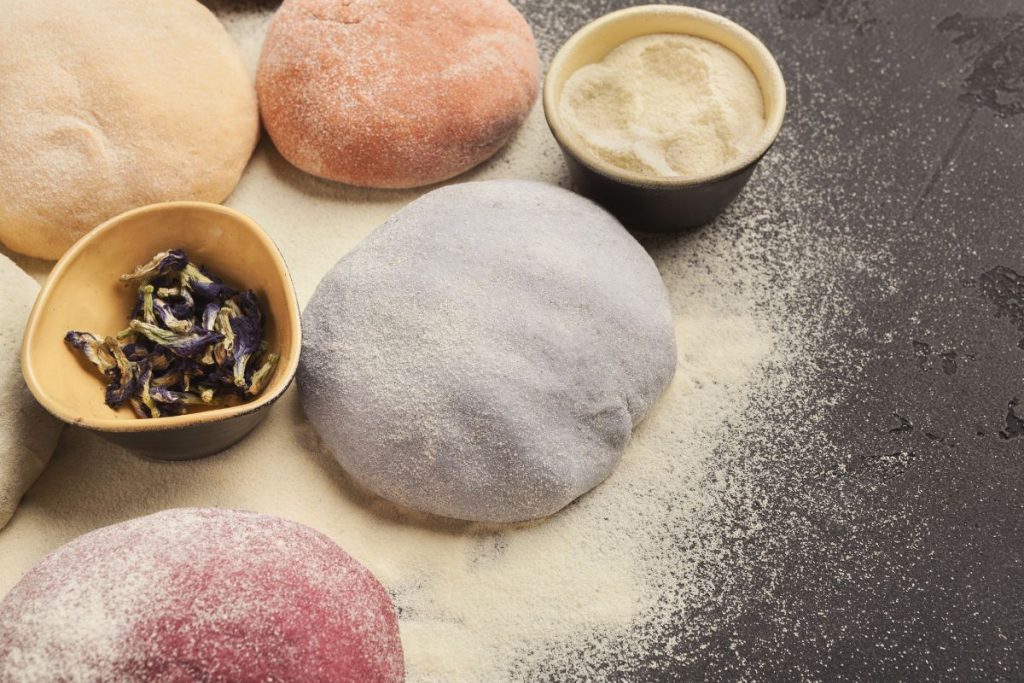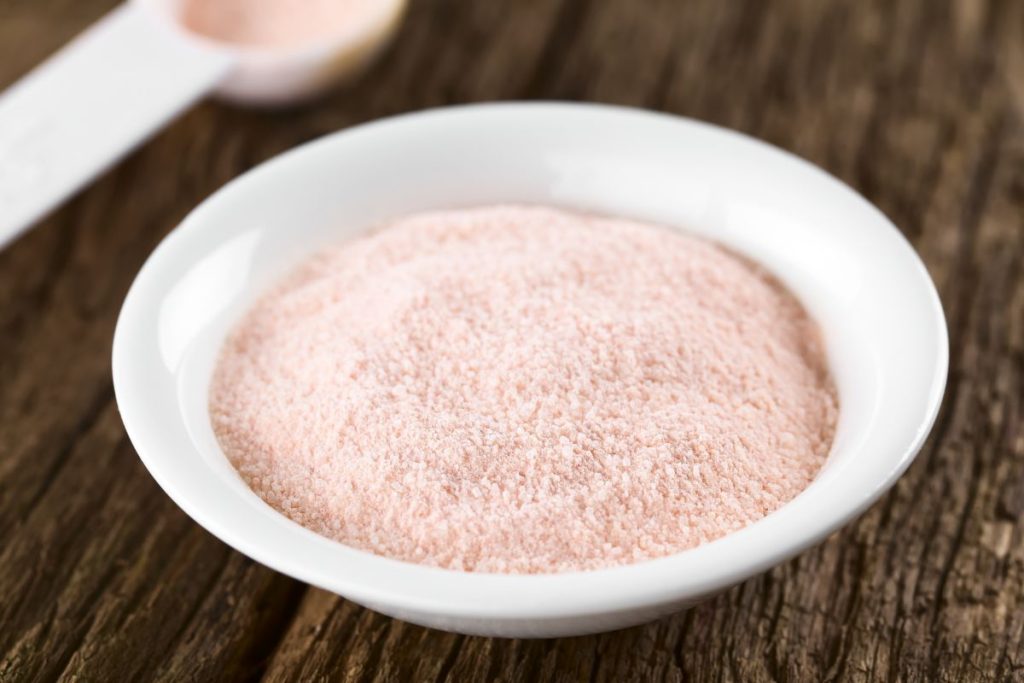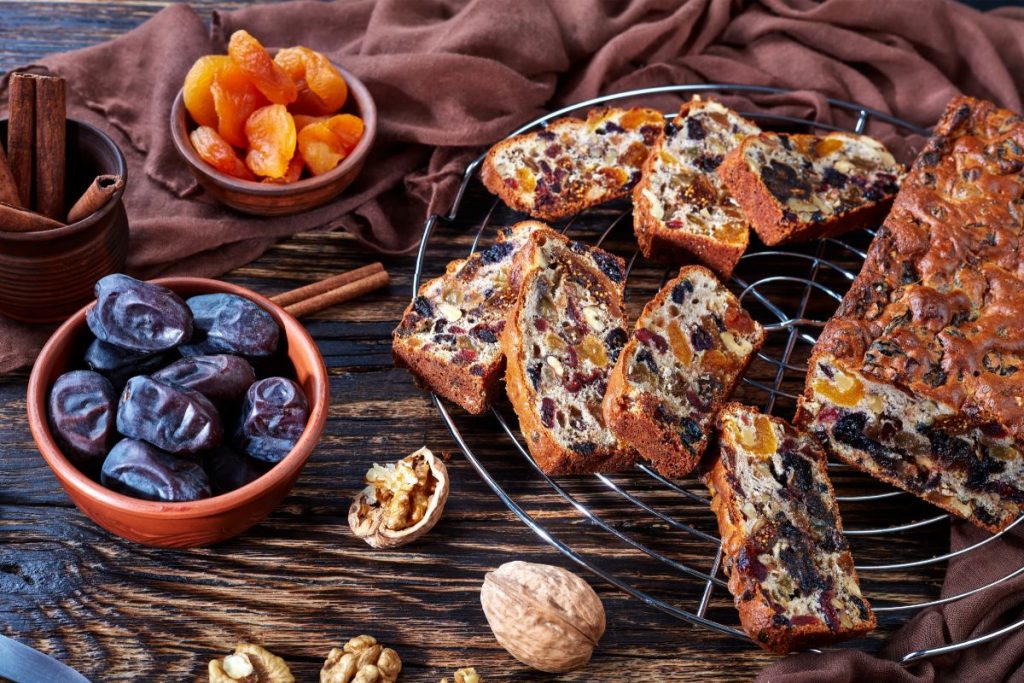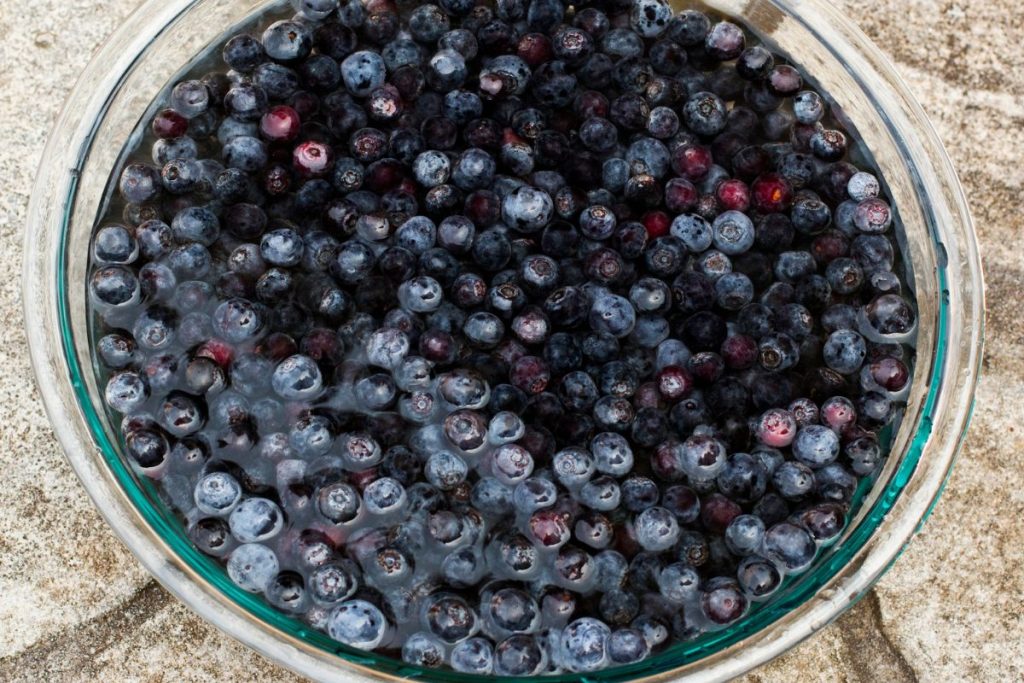When using dehydrated ingredients in baking, rehydrate them in hot water before incorporating them into batter, icing, or dough. Alternatively, add dried vegetables or fruits on top of raw dough before baking as an edible, natural decoration.
Table of Contents
How Do You Use Dehydrated Foods in Baking?
Incorporating dried foods in baking recipes is an excellent way to maximize their shelf life while rotating your food storage stock. Here are some ideas on how to use dried ingredients in food recipes for delicious baked treats:
1. Use Dehydrated Vegetables on Foccacia Bread
Have you seen those beautiful focaccia bread designs on social media? The ones where tomatoes and green onions are made to look like flowers? It’s easier to do than you think!
If you have some dehydrated veggies that need to be used, consider making DIY focaccia bread. Just arrange your dehydrated vegetables in a pattern or design on top of the raw dough, and bake!

2. Use Dehydrated Fruit Powder to Naturally Color Baked Goods
Do you often feel your baked goods could do with a pop of color? Try using dried fruit powders to add natural color to your bakes. Dried fruit powders add a unique fruity flavor, brightness, and color to baked goods, eliminating the need for commercial extracts or dyes.
Simply mix the fruit powder into doughs, icings, and batters. Some popular fruit powders include strawberry, apple, blueberry, peach, and mango.

3. Use Fruit Powder for Colorful Confectioner’s Sugar
Another way to use dried fruit powder is to transform the color of confectioner’s sugar. To make fruity and colorful sugar, mix one part of powdered sugar with two parts of dried fruit powder by weight. Use this colorful sugar as a substitute for ordinary powdered sugar to add sweetness and natural color to desserts.

4. Mix Dehydrated Fruits into Cookie Dough or Filling
Incorporate dried fruit into cookie dough or filling to add flavor and a satisfying, chewy consistency.
- To add dried fruits to cookie dough, cut them into small pieces with kitchen scissors or a sharp knife and stir them into the dough with a wooden spoon. Dice freeze-dried strawberries and add them to this fabulous strawberry chocolate chip cookie recipe for a sweet baked treat.
- To feed a crowd, mix whole dried blueberries into the filling of this lemon brioche buns recipe.

5. Use Dried Veggies in Baked Casseroles
Dried vegetables like peppers, green peas, and spinach make great baked casseroles worth their salt as family-friendly meals for any occasion. To make a casserole, simply combine starch such as potatoes, rice, or pasta with a sauce, a source of protein, your favorite dried veggies, and some cheese!
How Do You Rehydrate Food After Dehydration for Use in Baking?
Dehydrated foods absorb moisture from their surroundings, which may ruin the texture of your bakes. Rehydration is necessary to keep dried foods moist and prevent them from absorbing too much water from the other ingredients. Some dried foods, such as raisins, are better when fully rehydrated for baking items like cakes and muffins that require extra moisture.
How to Rehydrate Dried Fruit for Baking
Dried fruits require hot or cold soaking. The quickest way to rehydrate dried fruit is to soak it in boiling water or hot water for 10-15 minutes, depending on the fruit size. Another option is to place the dried fruit in a bowl of cold water and place it in the refrigerator for 24 hours.
How to Rehydrate Dried Vegetables for Baking
Most vegetables are soft and easy to rehydrate. Simply place them in a bowl of hot water for 5-10 minutes to rehydrate them.

How to Bake with Fruit Powder
Most fruit powder is made by blending dried fruits in a food processor or blender. Apart from using them as natural coloring, you can use fruit powders in some bakes by combining them with wheat or non-wheat flour for flavor and to reduce the flour content.
A ¾ to ¼ ratio of wheat or non-wheat flour to dried fruit powder works great for most recipes. When added to wheat flour, the fruit powder will thicken when it rehydrates as you mix the wet ingredients.
If you add dehydrated fruit powder to non-wheat flour in gluten-free baking recipes, you’ll have to add xanthan gum for the powder to gelatinize because it doesn’t gelatinize in water.
What is the Difference Between Using Dried and Freeze-Dried Foods in Baking?
Freeze-dried foods are the best dehydrated foods to use in baking recipes. They rehydrate faster, better, and more easily than their dehydrated counterparts. The rehydration time is almost immediate, and the process isn’t as complicated as softening dried foods.
The one shortcoming of freeze-dried foods is that they are more sensitive to light, heat, and moisture. As such, you must keep them in airtight containers under perfect long-term storage conditions before using them in baking. When making your favorite recipes using freeze-dried ingredients, use freeze-dried fruits or veggies near the end of the baking time as freeze-dried foods disintegrate faster in heat.
Is Fresh or Dehydrated Fruit Better for Baking?
Fresh fruits are better when baking with ingredients that have high moisture levels, such as muffins and cakes. Using fresh fruit eliminates the need for rehydration and is better for baked goods with lighter colors.
Dehydrated fruits are better in low-moisture baked goods such as cookies or bread as they don’t add excess moisture.

What are the Best Dehydrated Fruits to Use When Baking?
Berries and stone fruits are the best dehydrated fruits for baking due to their natural sweetness. Some other dried fruits that work exceptionally well in baking recipes include bananas, pineapples, figs, and dates. Try these berries and stone fruits in your next bake:
What are the Best Dehydrated Veggies to Use in Baking?
The best dehydrated vegetables to use in baking are common casserole vegetables such as:
Can You Sautee Dehydrated Vegetables for Use in Baking?
Sauteing is a dry-heat cooking method in which food is tossed around in a hot pan with a small amount of cooking oil. Since the ingredients turn brown, this method isn’t usually used when baking.

